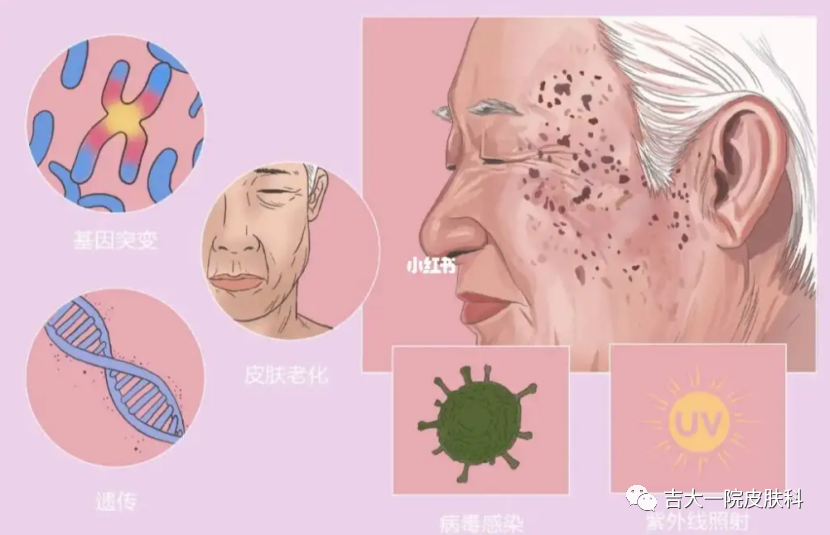This "wart" is not the other "wart" in micro-science popularization, which takes you to know "senile wart"
Seborrheic keratosis (SK), also known as senile warts or senile spots, is a benign skin tumor caused by keratinocyte proliferation, which is a manifestation of skin aging, and we usually call "ordinary warts" different. Common in people over 50 years old, can also be seen in young people, good hair on the head and face, the back of the hand, can also appear in the chest and other parts. It is manifested as a slight bulge on the surface of the skin, brown or dark brown maculopapules, plaques, which will have a little greasy feeling, and some patients will have a scab like skin loss if they gently pick out.

1. Is seborrheic keratosis skin cancer?
Seborrheic keratosis is a benign skin growth, not skin cancer, and the rate of malignant transformation is not high. However, if a person suddenly develops a very large amount of seborrheic keratosis in a short period of time, it is important to screen for the possibility of visceral tumors.
2. How is seborrheic keratosis diagnosed?
Usually, dermatologists can determine whether the skin lesion is seborrheic keratosis by gross or dermoscopy, but sometimes, seborrheic keratosis is often similar in clinical manifestations to the skin precancerous lesion solar keratosis or early skin cancer Bowen disease, and it is easy to misdiagnose, at this time, skin pathological biopsy is needed to help make a clear diagnosis.
3. How should seborrheic keratosis be treated?
Most patients do not need treatment, but if it disturbs patients or affects their appearance, the following methods can usually be used:
(1) Freezing - Using liquid nitrogen for local low temperature treatment, local skin color may be lightened after lesion removal.
(2) curettage - Use a scalpel or other tool to remove the lesion after skin anesthesia.
(3) Laser - Use electric ions or lasers to vaporize skin at high temperature under local anesthesia.
(The opinions expressed are solely those of the author. Some pictures in this article are from the Internet, if there is infringement, please contact to delete)
Written by: Mou Yueming attending physician, The First Hospital of Jilin University
Reviewer: Li Shanshan, Chief Physician, Vice President of Dermatology Branch of Chinese Geriatric Society, First Hospital of Jilin University

